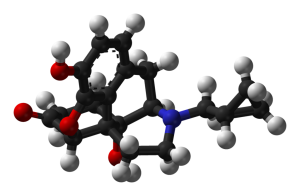 Low Dose Naltrexone (LDN) is used in many illnesses and syndromes, among them Lyme disease, fibromyalgia, chronic fatigue syndrome, multiple sclerosis, autism, rheumatoid arthritis, HIV and cancer. Since it works to balance the immune system, any condition that involves immune dysregulation may benefit from LDN.
Low Dose Naltrexone (LDN) is used in many illnesses and syndromes, among them Lyme disease, fibromyalgia, chronic fatigue syndrome, multiple sclerosis, autism, rheumatoid arthritis, HIV and cancer. Since it works to balance the immune system, any condition that involves immune dysregulation may benefit from LDN.
What is LDN?
LDN is an immune modulator, which means it helps to balance and strengthen the immune system without over-stimulating it. For this reason it is also used in auto-immune conditions such as rheumatoid arthritis, Hashimoto’s thyroiditis and Crohn’s disease.
How does it work?
Naltrexone in higher doses (50-300mg) was approved by the FDA in 1984 for helping heroin addicts, as it blocked the effect of such drugs. It did this by binding with opioid receptors in the brain.
In lower doses (1.5-4.5mg), it still causes a very mild blockage of those opioid receptors. The body’s response to this binding is to compensate by increasing production of endorphins and enkephalins (our natural opioids).
My Lyme patients have reported less pain, improved sleep, more energy and accelerated recovery with LDN. We know that tick-borne pathogens put a significant hold on the immune system, so the LDN can help overcome that and get the immune system fighting more efficiently again, while helping to ease pain, insomnia and fatigue.
Are there any side effects or contraindications?
LDN has very few side effects. Some people report some difficulty sleeping in the first week or so, which typically resolves spontaneously. I have found that starting with lowest possible dose and working up incrementally offsets this considerably (see section on dosing below).
There are a few cautions – for example, a patient with Hashimoto’s thyroiditis with low thyroid function will need to monitor their thyroid medication carefully, as when the thyroid starts functioning better after the LDN, the regular dose of medication may become too much. The lowest possible dose (1.5mg) is a good starting point in these cases.
LDN should not be taken by those on narcotic pain medications, or by transplant recipients.
In my practice, I have found that LDN is not effective for everyone in giving significant benefits of energy, pain reduction etc. The people it works for love it and it works great for them, but there are some who do not see great benefit and do not continue to take it. At a cost of approximately $50 a month, it may well be worth a trial.
Where is it available?
LDN is a prescription medication, and is available from several compounding pharmacies. For our local patients we use San Diego Compounding Pharmacy, where pharmacist Jerry Greene will compound LDN in any strength from 1.5mg to 4.5mg. For long-distance/ international patients, many other compounding pharmacies can produce it. The important things to be aware of is not to get a sustained release form, and that it not contain calcium carbonate as a filler. Both those things could reduce its efficacy.
How is it dosed?
I have found that starting at 1.5mg and working up to 4.5mg incrementally dramatically reduces the incidence of sleep disturbance that is possible in the early days of LDN (first couple of weeks typically). I suggest starting with 1.5mg (1 capsule) for 3-4 nights, then going up to 3mg (2 capsules) for a few nights, and finally up to 4.5mg (3 capsules) thereafter. Some people feel better at a lower dose, and choose to stay at 1.5mg or 3mg indefinitely. One does not offset the benefit by taking a lower dose – if you feel better at that dose, then it’s a better dose for you. Once the correct dose is established, we can prescribe the capsules at that strength so that you only have to take one each night.
